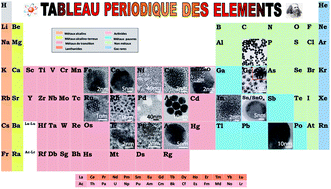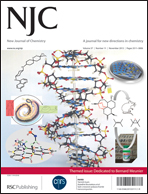Organometallic approach for the synthesis of nanostructures†
Abstract
Nanostructures are considered as chemical systems of high potential owing to their unusual properties at the interface of those of molecular species and bulk metals. Consequently, they are promising candidates for application in different domains such as catalysis, magnetism, medicine, opto-electronics or sensors. The control of the characteristics of nanostructures is a fundamental prerequisite if one envisages exploring their physical or chemical properties since they vary dramatically with size, shape and surface state. Thus, the development of efficient methods leading to reproducible nanostructures is presently one of the main objectives in the nanochemistry community. Although organometallic chemistry has been early involved, it arises only marginally in the field. Nevertheless, the concepts and techniques of organometallic chemistry appear to be well-adapted for the growth of well-controlled nanostructures. This will be discussed through recent advances in the synthesis of metal and metal oxide nanoparticles in terms of size dispersion, chemical composition, surface state, shape or organization, pointing out the role of ligands. Moreover their characterization at a molecular level and the development of their chemical/physical properties towards applications will be described. This review reflects more than 20 years of efforts of our team to achieve these goals.

- This article is part of the themed collection: In honour of Bernard Meunier

 Please wait while we load your content...
Please wait while we load your content...